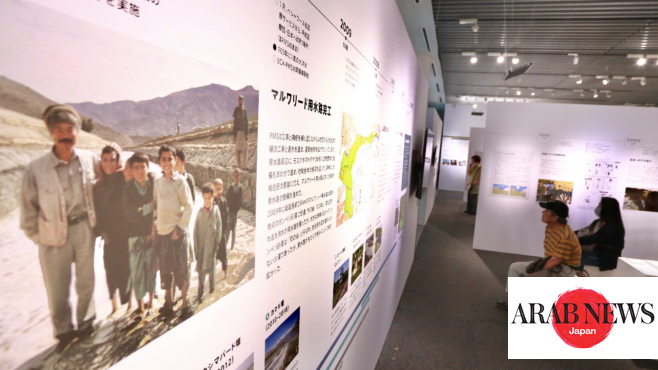Arab News Japan
TOKYO: Gallery A4 showcases the work of Dr. NAKAMURA Tetsu, who devoted an important part of his life to the aid and assistance of refugees between Pakistan and Afghanistan, and made him a person who is much appreciated and very much missed not only by Japanese, but also by Afghans and Pakistanis.
Nakamura is said to have helped more than 650,000 Afghans and Pakistanis by aiding in the irrigation of the arid Nangarhar Valley through a branch of the Kunar River.
To succeed in this project, he used technology from the Edo period that did not need modern equipment and which was made entirely by hand by the inhabitants of the valley.
During the war with the Soviet Union, the doctor, who treated lepers in the mountainous and remote regions of Peshawar and in Afghanistan, realized that the development of agriculture could be one of the main solutions to solve the problems of malnutrition and of diseases in the region.
FUJITA Chiyoko, the nurse in charge of the Peace Medical Service Association, who worked with the doctor for 35 years, reported the doctor’s words during a conference on Thursday at the gallery situated in the Tanaka Construction Company in Tokyo. She recalled him saying: “It is necessary that the local population are at the heart of their own development.”
The sudden death of the doctor in an attack in 2019 by Daesh while he was still working on irrigation projects saddened the people that Nakamura helped and leaders in fghanistan and Japan.
After his death, two associations that were still very active – Peace Medical Service and Peshawar no Kai – helped to continue his work in the development of these remote regions.

